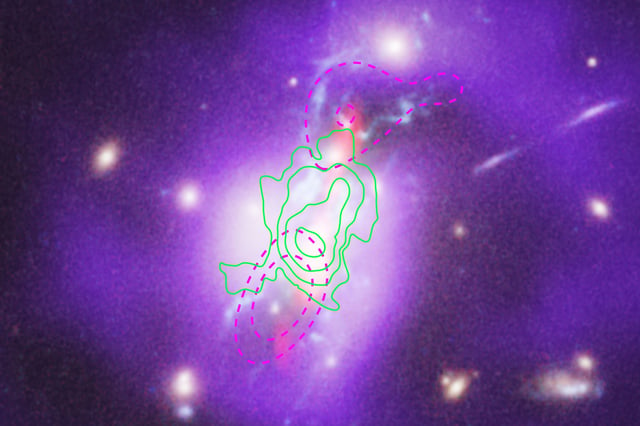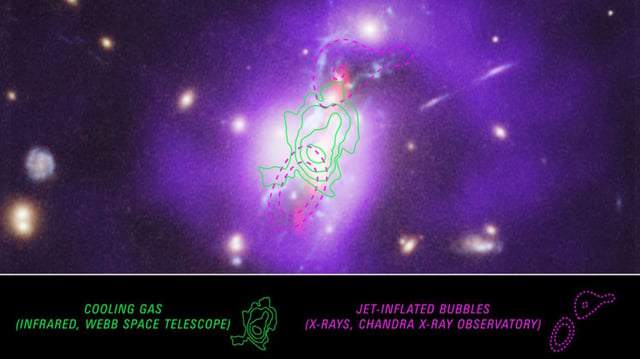Overview
- The Phoenix galaxy cluster, 5.8 billion light-years away, is forming stars at an unusually high rate, defying expectations for its age and size.
- Researchers have identified warm gas, previously undetected, as the missing piece in the cluster's cooling process that fuels star formation.
- The James Webb Space Telescope used its advanced mid-infrared spectrometer to map gas at around 540,000°F, bridging the gap between hot and cold phases.
- This discovery confirms that the cluster's star-forming fuel is generated internally through extreme cooling, rather than coming from external sources.
- The findings provide a complete picture of the hot-to-warm-to-cold gas cycle and open new possibilities for studying star formation in other galaxy clusters.

